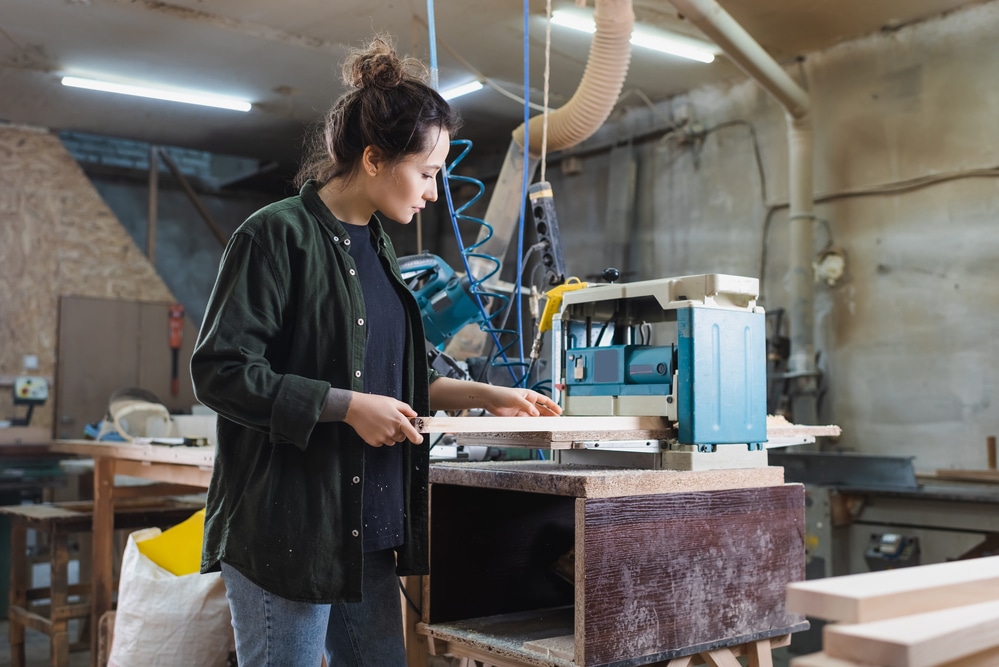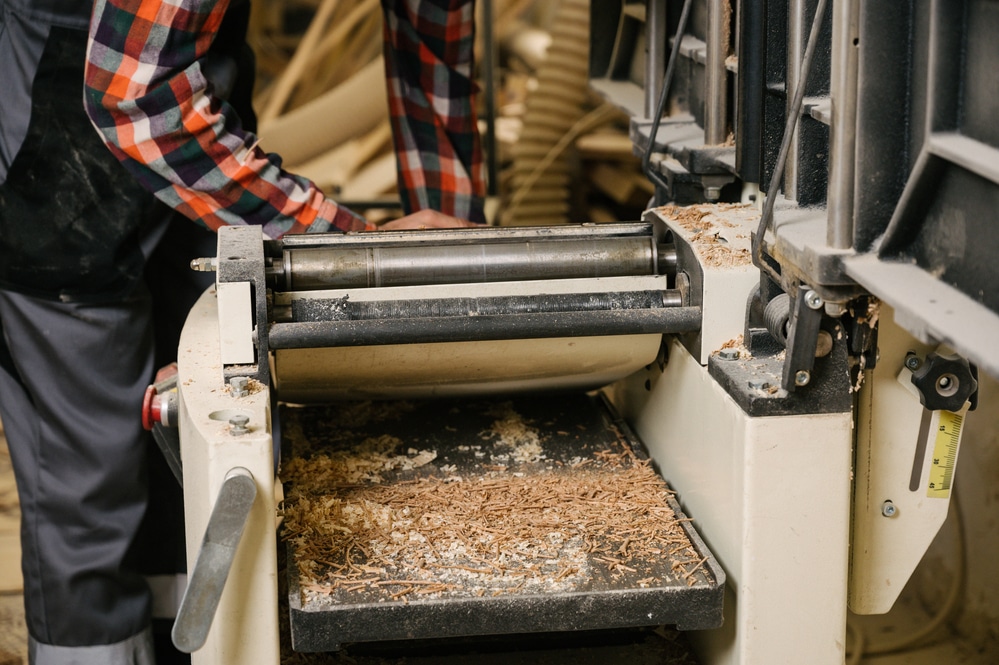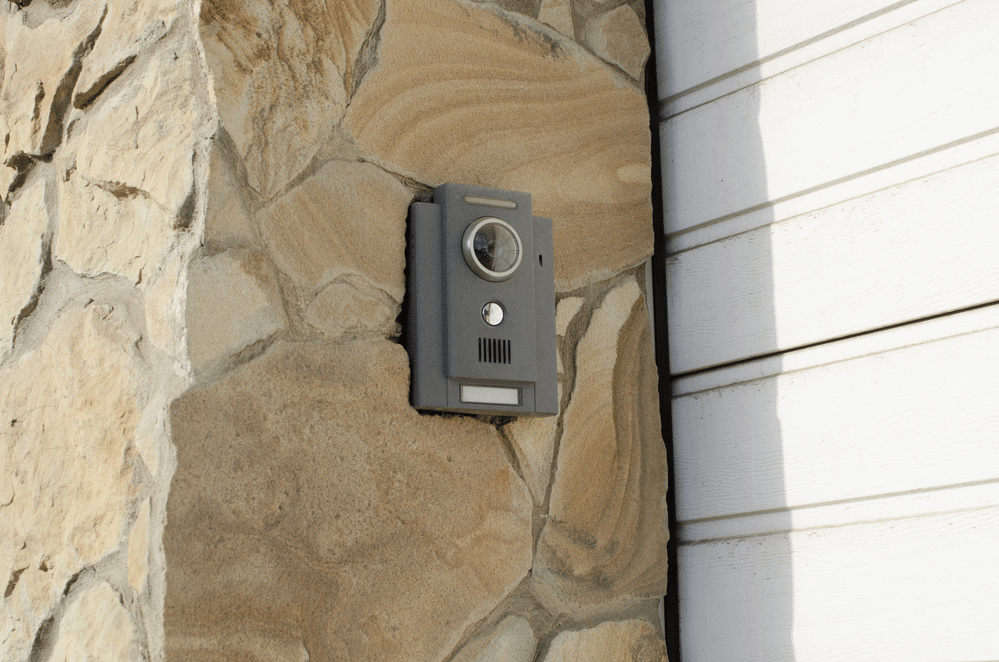Last Updated on
If you’re thinking of buying your tools for your woodworking projects, you may have asked yourself, “What size planer thicknesser do I need?”
A planer thicknesser is a simple woodworking machine which helps carpenters and professionals to create smooth, even boards out of lumber or wood. These products come in various shapes and sizes to suit different use cases.
Typically, smaller planer thicknessers are handheld and portable options designed for relatively basic woodworking projects. However, it’s also possible to access jointer planer combos and benchtop planers which can handle a much larger amount of material.
Here’s what you need to know about choosing the right planer thicknesser for your requirements.
Key Considerations When Choosing a Planer Thicknesser
A planer thicknesser is a valuable device in the woodworking world, used by carpenters who require large amounts of planed stock. They allow users to turn rough-cut lumber and wood into high-quality materials with the correct thickness for their projects.
A planer thicknesser produces a completely flat and consistent material quality for various projects, allowing woodworkers to reclaim used timber, therefore reducing the costs associated with buying pre-prepared wood. A planer thicknesser of the right size can help you achieve the correct depth and dimension in your wood projects without using hand planes to manually remove excess material.
Choosing the right planer and thicknesser will require you to consider various crucial factors, including:
The Type of Planer
Hand planers and lunchbox planers are relatively small and portable devices designed to help you carry your power tools with you wherever you go. These products can help you transform wood pieces to the correct thickness, but they often have limited functionality when compared to benchtop planers and full tabletop devices.
A benchtop planer will usually give you more power and versatility when dealing with large amounts of wood. A professional woodworker may prefer to choose a complete planer thicknesser without portable elements to access greater versatility.
Planing Width and Depth
And ran it through his planer/thicknesser (tool envy!) pic.twitter.com/5gjXxc1s3m
— The Rad – St Radegund Pub (@TheRadCB1) March 24, 2022
Perhaps one of the most important things to determine when asking yourself what size planer thicknesser you need is what kind of materials you’re going to be working with. The size of your woodworking machine will determine how much planning width and planning depth you can handle.
Most planers have a standard width of around 82mm, but there are some smaller devices on the market that can include various width options. The greater the available width, the more material you’ll be able to remove from a piece of wood in a single pass. A thicknesser’s height will also determine the board you can feed through the machine.
Portable devices are generally best suited for longer, relatively narrow pieces of wood, like floorboards and beams. Alternatively, benchmark thicknessers can be ideal for doors and larger items. The planning depth will also be a factor in choosing the right machine size. Most handheld planer thicknessers will have a depth of around 4mm per pass at maximum levels. If you need to remove more material than this, you may need a planer with a deeper planning depth.
Alternatively, you can remove more material from a board using a machine with a shallow planer bed. Still, you will need to make multiple passes based on the maximum thickness your machine can accommodate.
Wattage and Power Source
Beyond the type of planer thicknesser and size of the boards you’re planning on cutting, you may also need to consider the wattage and motor power source of your chosen machine. A device with a higher wattage will give you more power to work with.
This means if you intend to plane particularly dense wood or wide boards or need to remove large amounts of material at once, you might need to consider a device with a higher wattage. Planers are also available with a range of different power source options. Some cordless models have power levels of around 18 or 12 volts, while mains solutions are usually between 110 and 240 volts.
While a cordless machine will give you more movement and flexibility regarding how you work, a mains device will offer you a more consistent level of power without the need to recharge your batteries.
Other Factors to Consider When Choosing a Planer Thicknesser

While the three points above will help you determine what size of planer thicknesser you need, it’s worth remembering there are some other aspects to evaluate. For instance, you may want to consider getting a “combo” thickness planer to smooth your wood before planning it. Planer thicknesser and jointer combos can save some woodworkers a lot of time and effort, but they can also take up a significant amount of space.
If you’re buying a two-in-one device, you may need to consider the size of the jointer alongside the planer. Some combo machines have a slightly lower capacity for the jointer than the planer, making it difficult to work with different wood sizes in your projects.
How to Choose the Size of a Planer Thicknesser
To get back to our initial question: what size planer thicknesser do you need? There’s no one-size-fits-all answer. Like most things in the woodworking world, the ideal tool will depend on your personal project requirements and habits. Some experts believe it’s best to get a device with the highest level of capacity possible. Others feel it’s preferable to stick to something with the same capacity as their jointer bed.
Ideally, you’ll want a planer thicknesser that’s wide and large enough to give you plenty of options when it comes to choosing what kind of projects you want to work on and which materials you want to work with. However, keep in mind the larger and more powerful your chosen device is, the more you’re likely to spend on the machine and on keeping it powered.
In most cases, it’s best to go slightly above what you think you might need without overspending on functionality that might not be necessary for you and your workplace. As with other tools, ensure your device will fit within your chosen workspace while giving you enough room to feed timber and wood through it.
Rebekah is a writer who loves to explore new products and find hacks that make life easier. She has a knack for all things home improvement, health and fitness. So you’ll often find her on Pinterest or browsing Houzz for ideas.
She’s always looking for the next thing to fix up around the house or what gadget might be just right for her lifestyle. Rebekah enjoys exploring new recipes, taking care of her family, and making sure she stays healthy with regular workouts at the gym.



